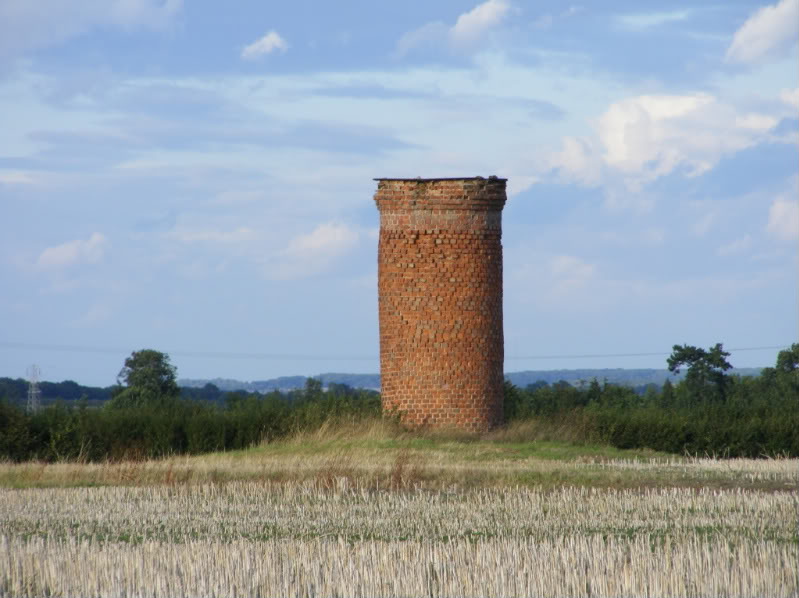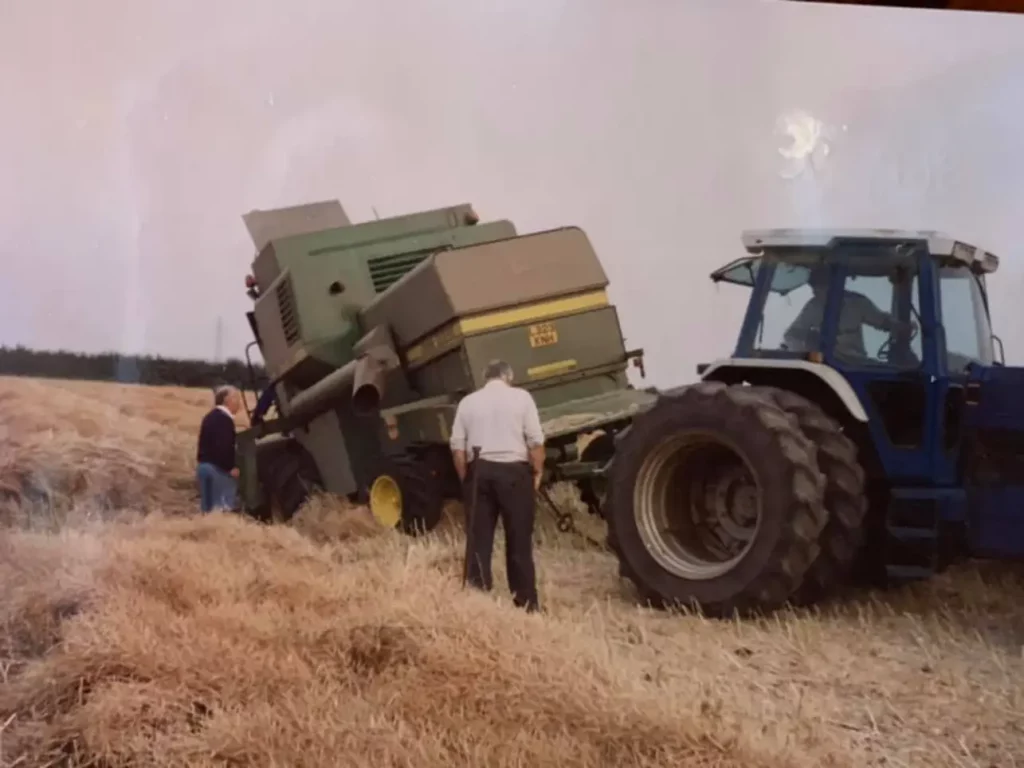There are little remains today on the surface from mining in Northamptonshire. The most impressive feature is the Church Mine ventilation chimney and I do not believe this is a listed monument.
During the recent years its been reduced in size, We have previous photos and up to date ones. The chimney itself enters the mine to a depth of 31m. From the soil level today it stands at roughly 30 courses of bricks tall, around 3m. It was previously 6-7m tall with 6 over corbelled courses on the top.
Below the top corbeling there use to be a distinctive clean mark, which went down 5 courses, these bricks were not weathered and looked new as if they had just been laid. It is suspected a cast iron band was installed here for structural support. The chimney does not change design its built header course its entire depth. Having a clean brick face would aid ventilation, for the 1.2m circular diameter chimney.
The chimney is situated on the private Drayton estate, access is forbidden. Church ironstone mine is now a home to various bat species, no one should enter the mine by the shaft, if bricks or other items were to fall inside the shaft, this could harm the roosting bats.
As time progresses the chimney is bound to deteriorate unless maintenance happens. A temporary surround needs to be installed for maintaining the mortar & replacing the handmade bricks . I hope this can become a listed monument in memory for the men who worked these mines & built this stunning peace of architecture.

Barlows & Buccleuch
Barlows surface mine is the smaller section of the site where some remains of mining site remain. The larger surface mine is Buccleuch.
In 1983 the locals campaigned for these sites not to be returned to agriculture land, the council says this was the first pocket park in the country! Today both are a nice walk, and you can view some interesting local geology.
Barlows surface mine holds some surprises, this is a small section of a much larger peice of history. Please view the “Irthlingborough” section .
Concrete railway sleepers are the first thing you will notice. this was a later extension to the surface mine. The bridge had to be installed for the road above, to let trains reach the rally banks then the mainline . Once walking further into the surface mine the remains of concrete platforms can be seen, we believe these to be the remains of a tippler dock, In the background a large concrete base remains ,This is the site of the ore crusher. Sadly not much remains of the crusher, a solid steel door can be found in the undergrowth this lead into a small brick built substation. The remains of a concrete shed can also be seen, this is where a gentleman once stood organising the trains entering and leaving the main tunnel at the end of Barlows surface mine.
A small open tunnel around a 3ft circle diameter will be on the same side as the door, this was the drain from buccleuch surface mine to the Barlows surface mine, buccleuch surface mine had to mix its wet claggy ore with up to 5 dry parts of mine iron ore. The main tunnel is the one directly in-front of you. The permission was given to drive this on 15th September 1937.
Payment would be £3.50 per yard at a 12ft wide & 8ft high , minimum driving distance was 120 yards per week, this would need to be done in 3 x 8 hour working shifts. The left hand tunnel was driven at a much later date when the mine was coming to a close, its purpose was for ventilation to the area north of Thrapston road. There was much concern about the noise of the 40hp motor fan being installed. The new fan-house was built and the fan installed and turned on, being in a 10m gullet nothing could be heard! The very next day it was turned off.
Wellingborough council now owns this site. No maintenance work is done. The whole area is strewn with rubbish & the footpaths in a terrible state, lots of surface samples of ironstone still exist for the geologist to view. Water seeps through the brickwork and into the deep depths of the mine. If this was ever stopped a large backlog of water could cause serious concerns for the stowage under the A6 highway “see link”
https://www.burtonlatimer.info/people/Alan-smith.html
Sinkholes
The news of the recent sinkhole, located in Finedon caused by the former Glebe and Thingdon mine came as a surprise to many people. If one was to study the mining history and techniques used in the region, it would be noticed not to be the first time of what is actually a reoccurring incident. There certainly will be many more of these happening in the future. Deterioration in underground workings can be seen from received photos.
Steel roof supports are constantly failing as are wooden props. These wooden props are now rotten, and were installed for a temporary support. When pillar robbing started to take place they were to be withdrawn, Because this has not happened and no maintenance has taken place there are now large evolving issues. It’s common for agriculture machinery now to fall inside these workings. Recovery operations have to take place.
Since entrance to the workings is forbidden, even to those with insurance, the true state of conditions is very alarming, photos we have received show this large void can not be forgotten about. Many sections have large collapses awaiting to drop with the unwary traveller on the surface.
Workings go under public byways, bridleways and footpaths. By infilling sinkholes without inspections this can cause many risks, bats can move into sinkholes from above ground, roosting bats are known to navigate deep inside the mine.
Stowage’s have taken place under some highways with only small pipes installed, If infill washes and blocks these or remaining items plug them it could cause a large head of water which is proven to be catastrophic, if the stowage was to fail this could happen again.
When walking the former Irthlingborough main entrance site at the Pine Trees estate, one can observe a very wet area of grass all year round. pipes are laid from the mine entrance here to a lagoon. These pipes have been mentioned in previous reports as the railway sleepers were left in place which could float down and block them. Is it possible now a head of water has formed Here causing this leak? This is a very large housing estate, if underground inspection was granted this could resolve this issue.

photograph from Finedon Local History Society
